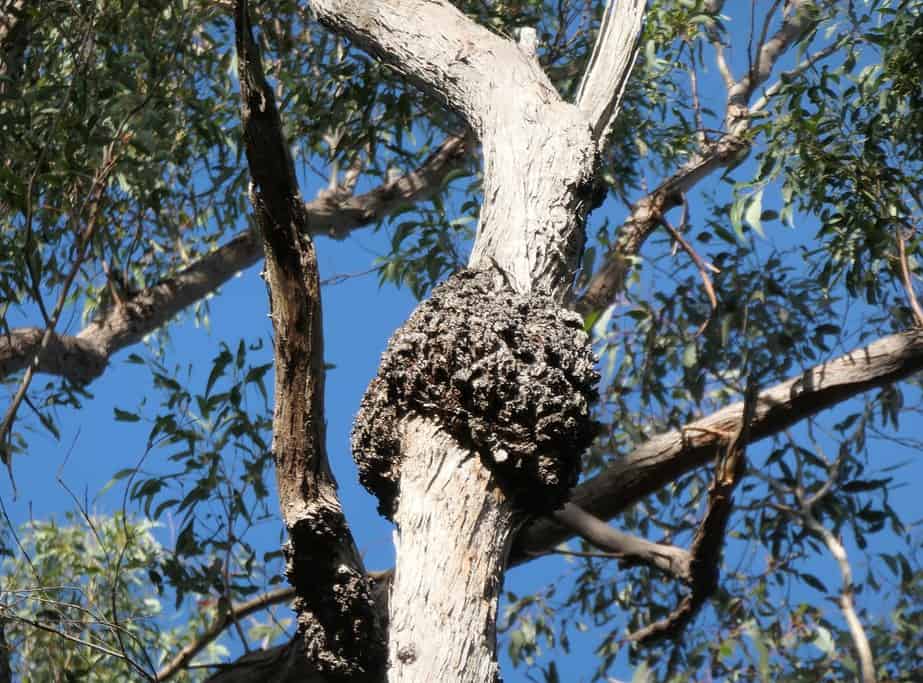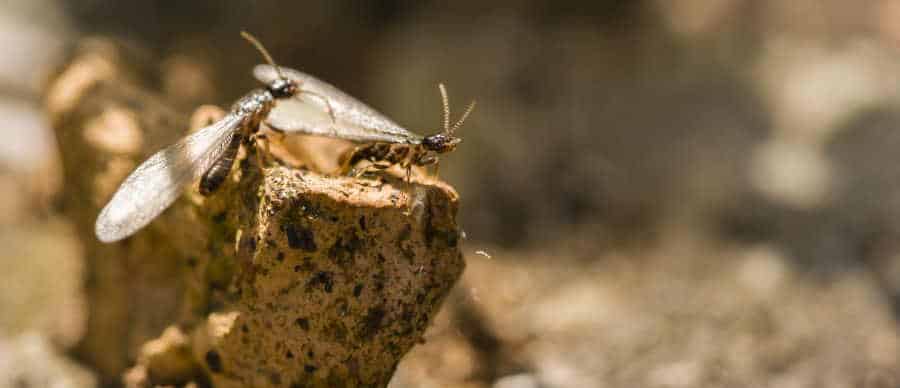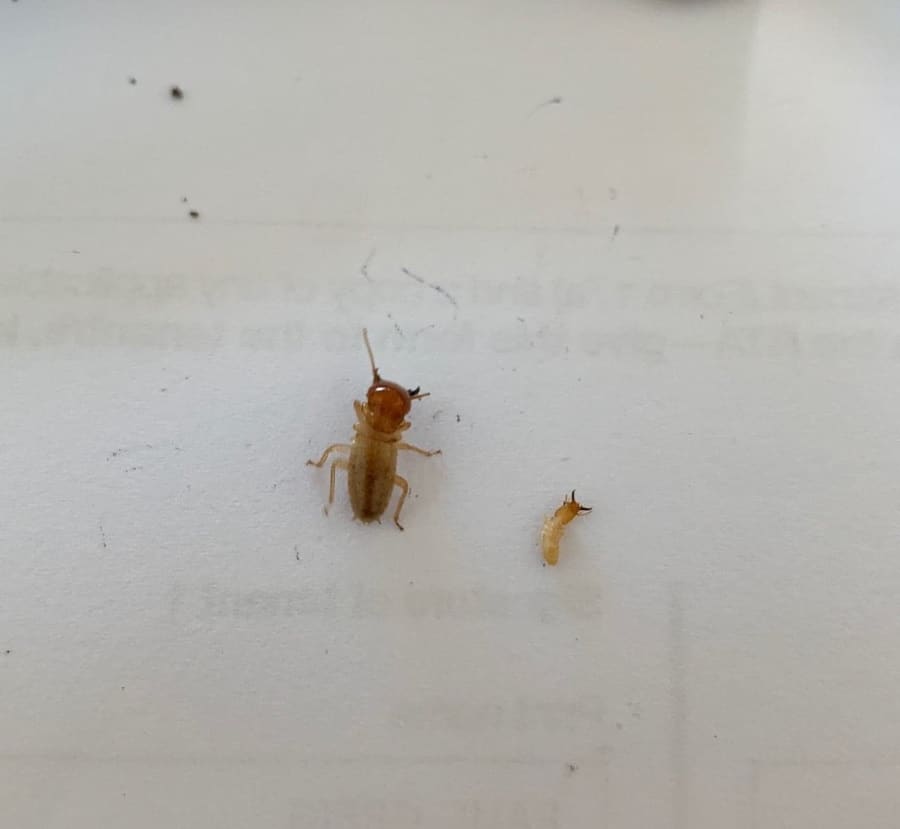Why Do We Call Termite White Ants?
Are they ants and are they white? Let’s delve into this question.
Termites Are More Like Cockroaches Than Ants
The term “white ants” is a common colloquial name used to describe termites in various parts of the world, but it is important to clarify that termites are not ants; they belong to a completely different insect order known as Isoptera. This colloquial term, “white ants,” is somewhat misleading, as it can create confusion due to the significant differences between termites and true ants. In this essay, we will explore the reasons behind this misnomer, the biology of termites, and their ecological significance.
The first thing you need to know is that termites are not ants. They’re more closely related to cockroaches than they are ants. This is a bit weird when you consider that cockroaches are solitary creatures. Whereas termites are social creatures that work together to build massive colonies and build termite mounds like this:

It seems that not only are termites closely related to cockroaches, they in fact evolved from termites. They are a kind of social cockroach in that respect. This following quote is from Live Science.
After conducting the most exhaustive genetic analyses yet into the subject, studying 107 different species of termites, cockroaches and mantises from across the globe, entomologist Paul Eggleton at the Natural History Museum in London and his colleagues now conclude termites are indeed a family of cockroaches.
Live Science
Evolution is a funny thing and we won’t argue with the science. It’s interesting though to think of how a solitary creature evolved to join forces and eat houses. That’s a long a way from where they started.
Termites Are White
Termites are white and look enough like ants to be mistaken for them. I imagine this is where the misnomer comes from.
They largely live and exist underground or inside enclosed termite nests. It’s rare they see the light of day so they have little need to be coloured. This is where the white appearance will come from.
Below is a video of some termites (white ants) we uncovered. You can see how much they resemble ants as they scurry about.
What About Flying Ants?
Termites can grow wings and fly. I know, disturbing right? During their reproductive cycle they grow wings and look something like this:

That’s a stock image of a European termite. Sadly we haven’t taken any images of winged termites ourselves. Other images and videos on this page are our own. You get the idea though, termites grow into these winged creatures during their reproductive cycle.
Flying ants exist also so if you see a flying ant, it’s quite possible it is actually an ant.
Terminology and Misconceptions:
The term “white ants” is primarily used in regions where termites are prevalent, such as Australia, India, and some parts of Africa. This colloquial name arises from the superficial similarities between termites and ants in their social structure and behavior. Both termites and ants live in colonies, have a division of labor among different castes, and play crucial roles in ecosystems. However, these similarities are only skin deep, as termites and ants are biologically distinct insects.
Ants belong to the order Hymenoptera, while termites belong to the order Isoptera. These two orders are as different as, for example, humans and primates. Termites are more closely related to cockroaches than to ants. To understand why termites are called “white ants,” it’s necessary to delve into the history and evolution of this common but inaccurate terminology.
Historical Context:
The origin of the term “white ants” can be traced back to the early European explorers and settlers who encountered termites in regions where they had never seen such insects before. The settlers, unfamiliar with these creatures, sought to describe them using terms they were already familiar with. Since termites share some behavioral traits with ants, such as living in colonies and having a caste system, the settlers dubbed them “white ants” due to their somewhat ant-like appearance and the light coloration of their bodies.
It’s important to note that this terminology was coined in a time when scientific knowledge about insects was limited. The colonists lacked the comprehensive understanding of insect taxonomy and biology that we have today. Hence, they resorted to likening these new insects to something they knew, which happened to be ants.
Physical Appearance:
One of the reasons behind the term “white ants” is the physical appearance of termites. Termites are typically pale or light-colored, and their bodies are soft and somewhat translucent. This pale coloration is due to their lack of pigments, which is a characteristic shared with some ant species. However, the similarities in coloration are superficial, as the two insects are anatomically different.
Termites have straight bodies, while ants have a more distinct segmentation of the body with a narrow waist (pedicel) that separates the thorax from the abdomen. Additionally, termites have straight, bead-like antennae, while ants have elbowed antennae. These differences in physical characteristics are clear indicators of the fundamental distinctions between the two insect orders.
Evolutionary History:
Termites and ants diverged from a common ancestor around 150 million years ago during the Jurassic period. Despite their shared ancestry, they have evolved to be distinct in terms of their biology, behavior, and ecological roles.
Termites are considered “living fossils” because their social behaviors and caste systems resemble those of their ancient ancestors. In contrast, ants have evolved more complex social structures and behaviors. Ant colonies often include a queen, workers, soldiers, and sometimes even other specialized castes like nurses and foragers, each with specific roles in the colony. Termites also have castes, including workers, soldiers, and a reproductive king and queen, but their social organization is generally less complex than that of ants.
Ecological Significance:
Termites play a crucial ecological role in various ecosystems, particularly in tropical and subtropical regions. They are known as “ecosystem engineers” because of their ability to break down cellulose, a complex organic compound found in plant material, including wood. Termites possess specialized gut bacteria that aid in the digestion of cellulose, a task few other organisms can accomplish efficiently.
In this context, the term “white ants” can be misleading because it downplays the essential ecological functions that termites perform. Their ability to break down cellulose helps recycle nutrients in ecosystems, making them available for other organisms. Additionally, termites are essential for soil aeration as they construct intricate tunnel systems underground, which allows water and air to penetrate the soil, benefiting plant growth.
Economic and Structural Impact:
While termites have significant ecological value, they can also be considered pests when they invade human-made structures. In many parts of the world, termites cause extensive damage to buildings, wooden structures, and agricultural crops. These insects feed on cellulose-based materials, such as wood, paper, and cardboard. Their destructive capabilities have earned them the reputation of being formidable adversaries to homeowners and the construction industry.
It’s worth noting that the term “white ants” is often used in the context of this destructive behavior, which can create confusion about the identity of the pests responsible for the damage.
Distinctive Characteristics of Termites:
To further emphasize the differences between termites and ants and clarify why the term “white ants” is not accurate, let’s explore some distinctive characteristics of termites:
Winged Reproductives: Termites have two pairs of wings of equal size, which are shed after a brief flight during the mating process. In contrast, winged ants have two pairs of wings with different sizes.
Antennae: As mentioned earlier, termite antennae are straight and bead-like, while ant antennae are typically elbowed.
Waist Segmentation: Termites lack the distinctive narrow waist that ants have. Their bodies are more uniform in width.
Mouthparts: Termites have chewing mouthparts, while ants have biting and chewing mouthparts.
Social Structure: While both termites and ants live in colonies with a division of labor among castes, the social structure and organization of their colonies differ significantly.
Biological Order: Termites belong to the order Isoptera, while ants belong to the order Hymenoptera.
Let's Not Forget The Mastotermes Darwiniensis
I doubt anyone is going to mistake this termite for an ant. Even the biggest bull ant isn’t going to be as large as this thing. Below is a picture Richard took of a Mastotermes Darwiniensis next to a regular termite.

Mastotermes Darwiniensis usually only exist in the north of Australia. You can read more about them in this article. Richard found some in the yard of a Gold Coast property and was featured on the local news.
White Ants Is Just A Misnomer For Termites
As you can see now, the term white ants isn’t an accurate description of termites. It’s used because termites are white and look something like ants. Termites are more closely related to cockroaches. But nobody is gonna call them white cockroaches!
In summary, the term “white ants” is a colloquial misnomer used to describe termites due to superficial similarities between the two insects, such as their colony-based social structure and light-colored bodies. However, termites and ants are biologically distinct, belonging to different insect orders with divergent evolutionary histories and behaviors. The use of this term can lead to confusion and misunderstanding about the true nature of termites and their ecological significance.
Termites are remarkable insects with important roles in ecosystems as decomposers of plant material, soil aerators, and nutrient recyclers. They also have economic significance, both as pests and in some cultures as a food source. To accurately understand and appreciate termites, it is essential to recognize them as a separate insect order with their own unique characteristics and ecological importance. While the term “white ants” may persist in some regions, it is crucial to educate and inform people about the biological differences between termites and ants to dispel this common misconception.


